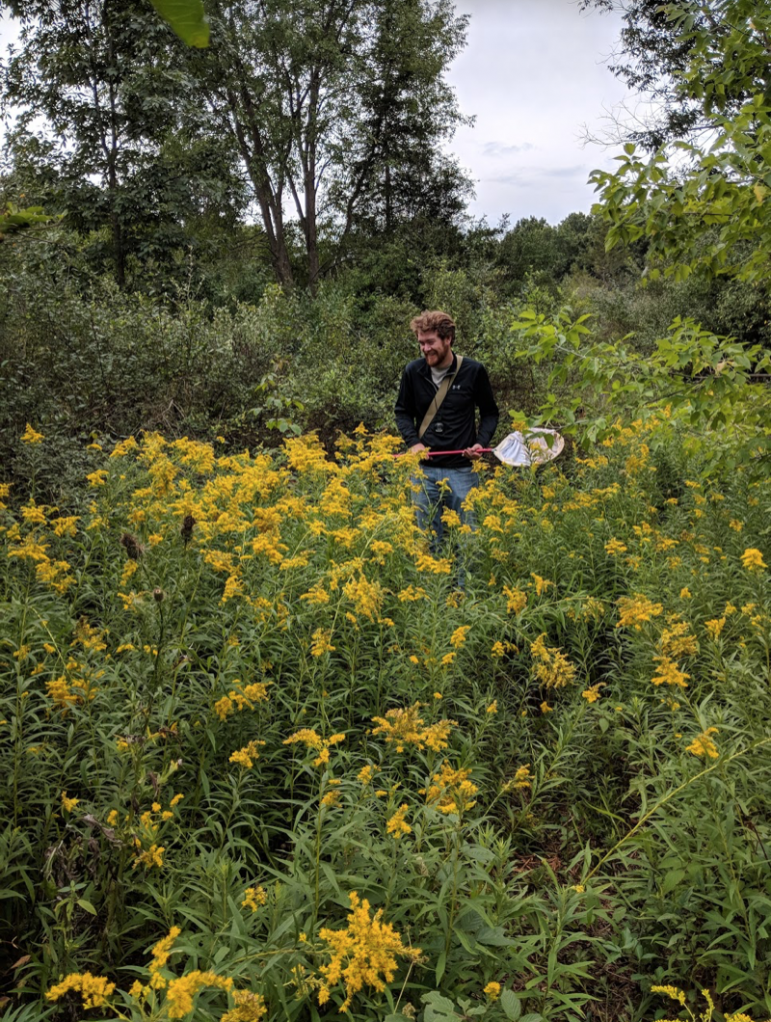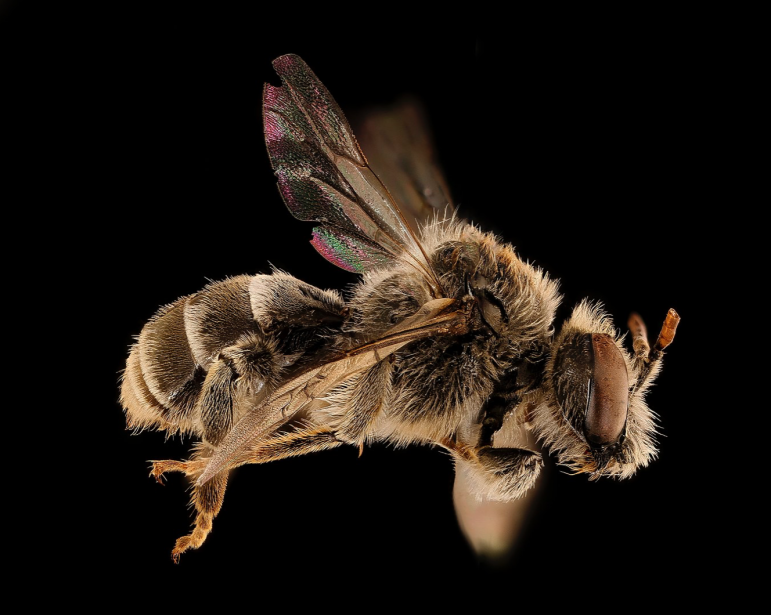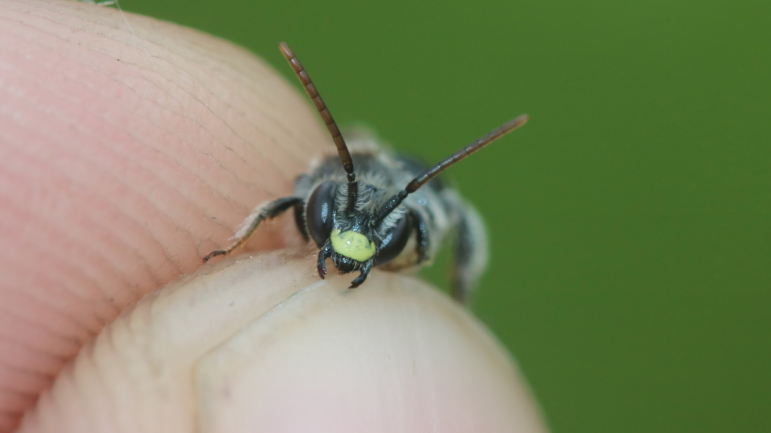By ERIC FREEDMAN
Capital News Service
LANSING – It’s taken more than seven decades, but one of North America’s rarest bees has returned to Michigan.
If it truly ever disappeared, that is.
“Epeoloides pilosulus” is the scientific name of the elusive and possibly long-gone but recently rediscovered bee, but we’ll call it by its more common name, cuckoo bee.
The discovery came during the 2018 annual bee survey at Midland County’s Averill Preserve, where researchers looked for bees feeding on flowering plants in open habitat, according to a new study in the journal Great Lakes Entomologist.
The 72-acre preserve owned by the Little Fork Conservancy is located along the Pere Marquette Rail-Trail and overlooks the Tittabawassee River.
The cuckoo bee is a parasite that had been found in Berrien, Midland, Wayne and Van Buren counties. However, “most specimens in Michigan were collected in the early part of the 20th century,” and it hadn’t been recorded in the state since 1944, the study said.
“The specimen was collected as it was patrolling a small patch of flowers along a walkway,” the study said. At the time, it was feeding on a type of flower known by several common names: creeping jenny, moneywort, herb twopence and twopenny grass.
The discoverer was Michigan State University undergrad Michael Killewald, a co-author of the study and now a graduate student at the University of Manitoba.
But the cuckoo bee may have been hiding in plain sight for 74 years.
“Nobody was actively looking for it until recently,” study co-author Kelsey Graham, a postdoctoral entomologist at MSU, said in an interview. “It’s not super-surprising it hadn’t been seen in a long time.”
Researchers have intensified their focus on bees in light of rising concerns that the population of some species has plummeted, possibly due to changing temperatures. Some die-offs have been front-page news.
The study noted, “The status of wild bee species and populations has been the subject of a great deal of attention by the scientific community in recent years.”
That trend has worrisome implications for farmers who depend on them to pollinate their fruits and vegetables.
Rare as it is, the cuckoo bee isn’t an important pollinator for crops or most types of flowers and, Graham said, “most cuckoo bees are not providing any services.”
In fact, they’re bad news for another type of bee known as the yellow loosestrife or oil bee, which is its principal host. That’s because the cuckoo bee is a nest parasite. The host bees “remain widespread” in the state and are found in most often in the Saginaw Bay area. Last year they were identified in Alcona, Lenawee, Alpena, Dickinson, Midland, Hillsdale, St. Clair and Tuscola counties
Graham explained:
The yellow loosestrife bee nests in the ground and collects pollen and oil to make into a ball. It then lays its egg on top of the ball, which provides nutrition to the newborn bee.
But beware: The cuckoo bee “sneaks in” when the yellow loosestrife bee is away from the nest and lays its own egg on the ball of pollen. If the host still manages to lay its own egg there as well, the cuckoo bee is likely to hatch first and eat the host’s egg, Graham said.
Coincidentally, the yellow loosestrife bee also appears to have disappeared from Michigan for decades, according to the study. It was last recorded in 1959 and not rediscovered until 2017.


